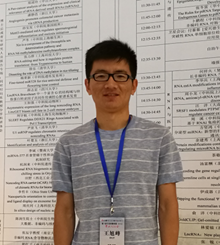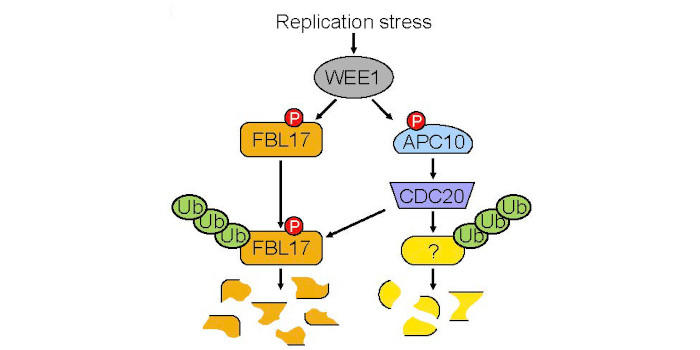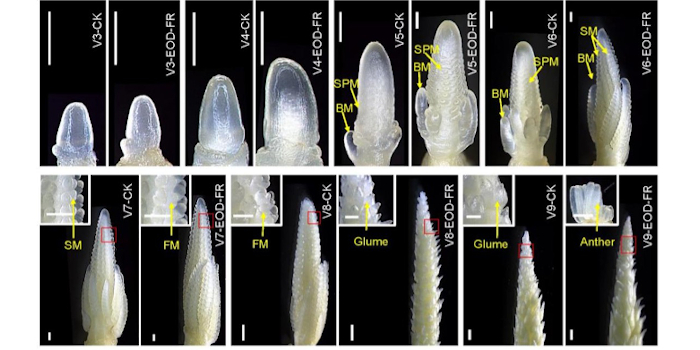Xufeng Wang: The Plant Cell Author Profile

 Xufeng Wang, co-first author of “INDETERMINATE1 autonomously regulates phosphate homeostasis upstream of the miR399-ZmPHO2 signaling module in maize”
Xufeng Wang, co-first author of “INDETERMINATE1 autonomously regulates phosphate homeostasis upstream of the miR399-ZmPHO2 signaling module in maize”
Current Position: Assistant Project Scientist, Botany and Plant Sciences, University of California, Riverside
Education: Ph.D., China Agricultural University, China
Non-scientific Interests: basketball, fishing
Brief biography: I started my academic studies under the guidance of Prof. Feng Tian at China Agricultural University in 2011. My research was mainly focused on maize quantitative genetics and bioinformatics. We comprehensively assessed the gene expression variation by sequencing the transcriptome of a large maize-teosinte experimental population, identified eQTL controlling gene expression, constructed gene regulatory network, and finally dissect the regulatory divergence between maize and teosinte. After receiving the Ph.D. degree in 2017, I joined the lab of Prof. Lin Liu at Shenzhen University as a Postdoctoral Fellow and continued my research on maize epigenetics. I worked on exploring the microRNA (miR399) functions in maize phosphate homeostasis. Maize is an important crop and cultivated widely for both staple food and industrial usage. Phosphorus is a major constituent of the fertilizers required to sustain high maize yields, however the world phosphorus resources are quickly diminishing and may be exhausted in the near future. Thus, it is vital to elucidate the underlying molecular mechanisms of phosphorus acquisition and utilization in maize to develop varieties with high phosphorus use efficiency. Despite the crucial roles of miR399 and PHO2 in regulating phosphate acquisition and translocation, the regulatory pathway upstream of miR399-PHO2 is not fully understood, especially in maize. Our work reveals that the transcription factor INDETERMINATE1 (ID1) functions as an autonomous upstream regulator to suppress the transcription of ZmMIR399 genes by directly binding to ZmMIR399 promoters, thus decreasing the accumulation of mature miR399 and alleviating the cleavage of the ZmPHO2 transcript and ultimately contributing to the maintenance of phosphate homeostasis in maize. Now, I am an Assistant Project Scientist in Prof. Xuemei Chen’s lab at University of California, Riverside, focusing on the studies of microRNA biogenesis in Arabidopsis.
姓名:王旭峰
目前职位:加州大学河滨分校,项目助理研究员
学历:中国农业大学博士
兴趣爱好:篮球、钓鱼
个人简介: 我于2011年进入中国农业大学,在田丰教授的指导下开始学术研究,主要从事玉米数量遗传学和生物信息学方面的研究。我们通过对一个玉米-大刍草重组自交系群体进行转录组测序,全面评估了基因表达变异,确定了控制基因表达的 eQTL,构建了基因表达调控网络,最后剖析了玉米和其祖先种大刍草之间的调控差异。获得博士学位后,我于2017年加入深圳大学植物表观遗传研究团队刘琳教授课题组做博士后,继续从事玉米表观遗传学方面的研究。我致力于探索 microRNA (miR399) 在玉米磷稳态调控中的功能。玉米是一种重要的粮食作物,如今已经在全世界范围内被广泛种植。磷是维持玉米高产所需肥料的主要成分之一,然而磷资源正在迅速减少,并可能在不久的将来被耗尽。因此,阐明玉米磷获取和利用的分子机制对于培育磷高效品种具有重要意义。尽管 miR399 和 PHO2 在调节磷酸盐获取和转运中起着至关重要的作用,但 miR399-PHO2 上游的调节途径尚不完全清楚,尤其是在玉米中。我们的工作表明,转录因子 INDETERMINATE1 (ID1) 作为一个自主的上游调节因子,通过直接结合 ZmMIR399 启动子抑制了 ZmMIR399 基因的转录,从而减少了成熟 miR399 的积累并减轻了 ZmPHO2 转录产物的切割,最终有助于玉米中磷稳态的维持。现在,我是加州大学河滨分校陈雪梅教授实验室的项目助理研究员,主要从事拟南芥中microRNA生物合成的研究。


 Huixue Dong, first author of
Huixue Dong, first author of  Xiaojing Dong, first author of
Xiaojing Dong, first author of 
 Xiaowen Shi, co-first author of
Xiaowen Shi, co-first author of  Bingxin Wang, co-first author of
Bingxin Wang, co-first author of 

 Findings: BdFAMA promotes guard cell fate in the final step of stomatal development, but unexpectedly, is “on” much earlier, overlapping with the preceding gene, BdMUTE. Other grasses die without MUTE activity, but in Brachypodium, this earlier expression of BdFAMA can compensate for the absence of MUTE. In Arabidopsis, BdFAMA function can replace both MUTE and FAMA, but cannot rescue myrosin cells, a specialized cell type in the Brassica family. So, some of FAMA’s roles are the same across different plants with unique stomata, but other roles have species-specific nuances.
Findings: BdFAMA promotes guard cell fate in the final step of stomatal development, but unexpectedly, is “on” much earlier, overlapping with the preceding gene, BdMUTE. Other grasses die without MUTE activity, but in Brachypodium, this earlier expression of BdFAMA can compensate for the absence of MUTE. In Arabidopsis, BdFAMA function can replace both MUTE and FAMA, but cannot rescue myrosin cells, a specialized cell type in the Brassica family. So, some of FAMA’s roles are the same across different plants with unique stomata, but other roles have species-specific nuances.